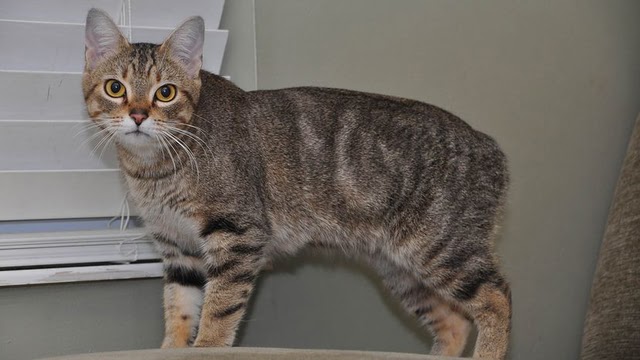Quck answer
Manx cats are a breed of cats that originate from the Isle of Man. They are known for their unique characteristic of having no tail or sometimes a very short tail. The reason for this is a genetic mutation that occurred naturally in the breed’s ancestors. The mutation affects the development of the spine and tail during embryonic growth. While some people believe that the taillessness of Manx cats is due to human intervention, there is no evidence to support this theory. While the lack of a tail may make them appear different from other cats, it does not affect their health or ability to function normally.
Pets

The Manx cat is a breed that doesn’t have a tail. This breed is known to have originated from the Isle of Man, where it acquired a genetic mutation that affected the development of its spine. The tailless trait became dominant among the cat population on the island due to the isolation of the place. It’s believed that Manx cats bred with cats brought by Nordic explorers, which led to the emergence of the breed as we know it today. The gene that caused the tailless trait is labeled “M,” which resulted in the abnormal development of the tail and sacral vertebrae. All Manx cats have one M gene and one normal gene, with the mutant gene being incomplete dominant. This means that the two genes for a particular trait combine, and neither dominates the other. Therefore, Manx cats are born without tails, or with tails of varying lengths, which are classified as rumpy, rumpy riser, stumpy, or longy.
Manx Cats Are More Than Just Taillessness
The Manx cat is a beloved breed that has more to offer than just being tailless. The CFA recognized the breed as one of its five founding breeds in 1906. Manx Station Farm & Cattery in Greenwich, New York, is one of the places where Manx cats are bred and sold. Vicki and Glen Webberley, the owners of the farm, are great fans of the breed. According to Vicki, the Manx cat’s roundness is another striking characteristic of the breed besides its taillessness. They have a short compact body, rounded ears, and small to medium-sized eyes. They are double-coated and come in any color and pattern except pointed. Manx cats have strong hind legs, which are slightly longer than their forelegs, giving them a jacked-up appearance. Despite not having tails, they can jump well due to their dense and muscular bodies.
Manx cats have personalities that are more like dogs than cats, according to Webberley. They are very attached to their owners and will come when called, watch attentively, and play fetch. Unlike other cats, they enjoy human company and are playful. They also like to hunt and will catch insects, rodents, and birds. However, there is a downside to the breed known as Manx syndrome, a range of serious spinal health issues. Webberley acknowledges that some groups believe breeding Manx cats is cruel, but others argue that with responsible breeding, the breed can be continued without perpetuating the health issues. Docking the tails of stumpy Manx is also a controversial issue, but most breeders are motivated by their love for the breed and their desire to maintain an ancient breed. Koko, the western lowland gorilla who knew American Sign Language, had a pet Manx kitten named “All Ball.”
FAQ
1. What is a Manx cat?
A Manx cat is a breed of cat that is characterized by its lack of a tail. They are native to the Isle of Man, a small island located in the Irish Sea between England and Ireland.
2. Why don’t Manx cats have tails?
There are a few different theories about why Manx cats don’t have tails. One theory is that they were originally bred this way to help them survive harsh weather conditions on the Isle of Man. Another theory is that a genetic mutation caused their tails to disappear over time.
3. Are all Manx cats tailless?
No, not all Manx cats are tailless. Some Manx cats have short tails, while others have longer tails. However, tailless Manx cats are the most common.
4. Can Manx cats still balance without a tail?
Yes, Manx cats are able to balance without a tail. They use their strong hind legs to help them balance and adjust their body position.
5. Do Manx cats have any health problems related to their lack of a tail?
Some Manx cats may be prone to spinal problems, as their lack of a tail can affect their spinal development. However, not all Manx cats experience these problems.
6. Are Manx cats good pets?
Yes, Manx cats can make great pets! They are known for being playful, affectionate, and intelligent. They are also adaptable to a variety of living situations.
7. Are Manx cats rare?
While Manx cats are not as common as some other breeds, they are not considered to be a rare breed. However, tailless Manx cats are more rare than those with short or long tails.
8. How do you take care of a Manx cat?
To take care of a Manx cat, you should provide them with a healthy diet, regular exercise, and plenty of love and attention. You should also make sure to take them to the vet for regular check-ups and vaccinations.
9. Can you show Manx cats in cat shows?
Yes, Manx cats can be shown in cat shows. They are recognized as a breed by many cat associations, and there are specific standards that they must meet in order to be eligible for competition.





Leave a Reply